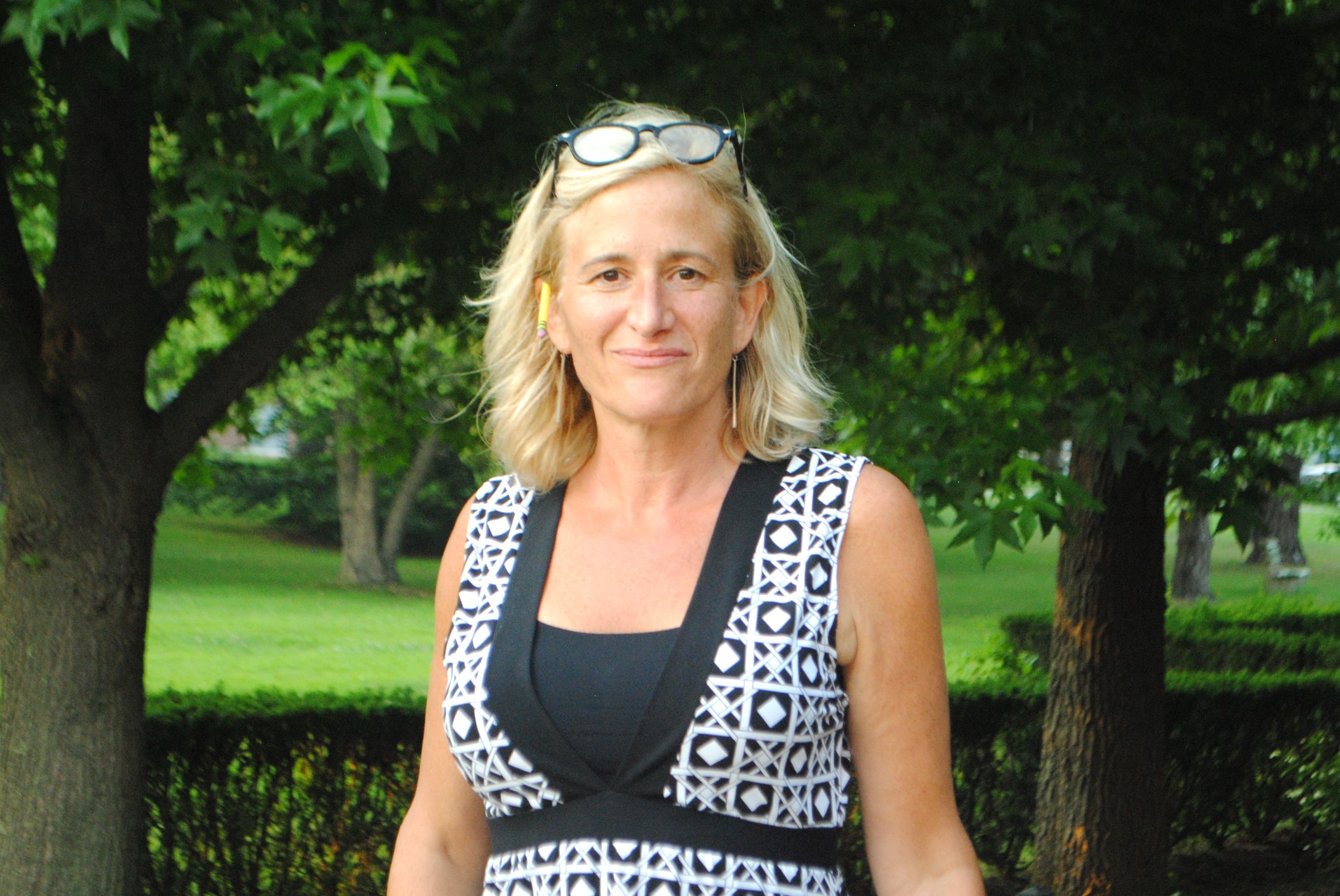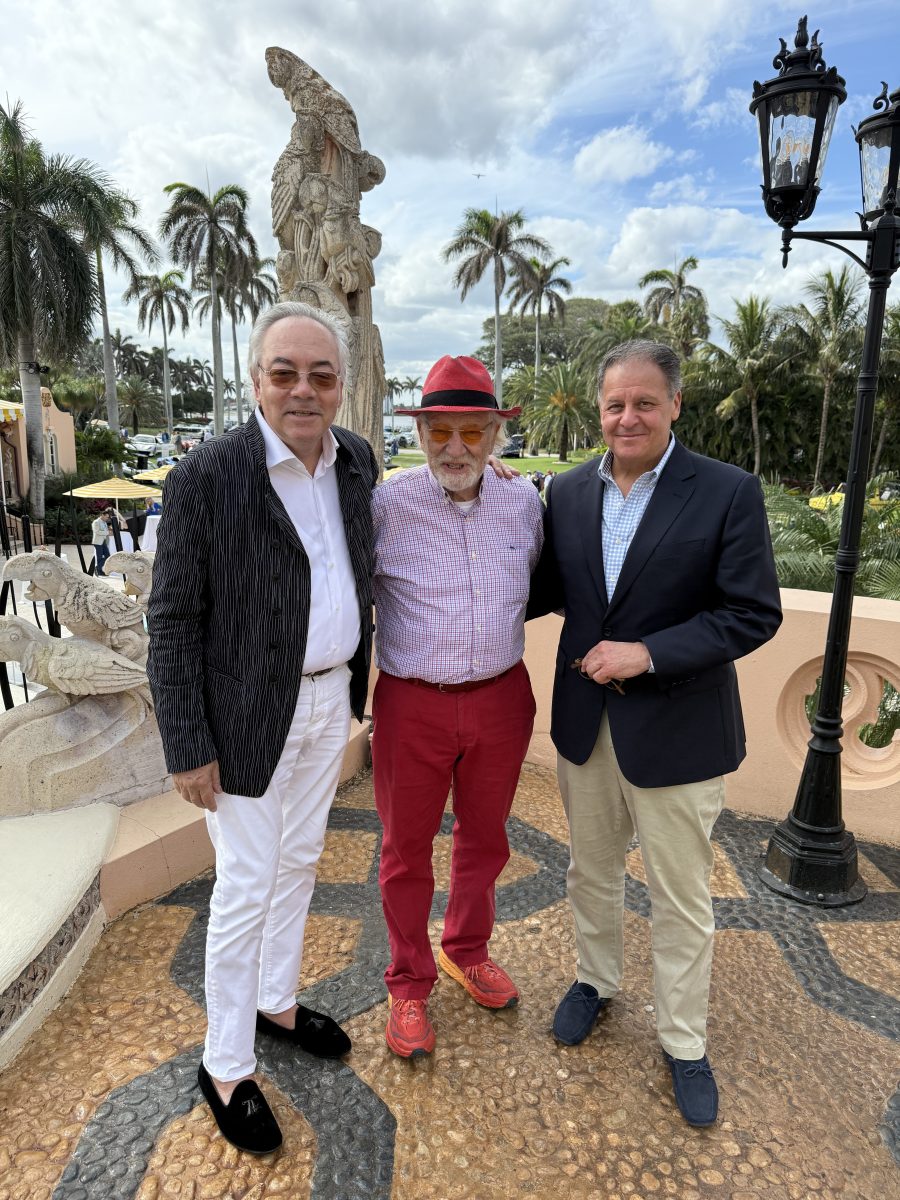Who's Here: Melissa Bank, Author

For the past 13 years, Melissa Bank has made the Hamptons her year-round refuge, as she helps keep the writerly traditions of the East End alive and well. She enjoys the privacy of her log cabin in the north woods between East Hampton and Sag Harbor, and even in high season manages the isolation necessary for the hard labor of writing. “I’m sort of afraid of the crowds in the summertime,” she says. “I plan it so that I am just writing at the house, going to the beach, stopping at the farmers markets, and going to the library. It’s a carefully choreographed dance.”
Although she jokes about the loneliness of writers, she knows the occupational hazards better than most. “As many who try to write will discover,” she says, “it requires a lot of isolation. You can sometimes forget how to talk to people in the real world.”
Like many of the visual artists who call the East End home, Bank is also drawn to the light. “I particularly like the dappled light,” she says. “The sun comes through the leaves and makes shadows on the grass. There are not many beach communities that are this green.” She also makes the water’s edge a part of her Hamptons routine, taking her golden retriever, Stella, for walks along the beach at Barcelona neck. The only interruption comes when her dog spots a beachgoer’s picnic. “It’s so embarrassing, but I don’t know what to do to stop her.”
Bank has published a wide range of fiction and nonfiction to critical acclaim, with her work appearing in Washington Post Magazine, The Guardian, The North American Review, Cosmopolitan, Glamour, Life and The Chicago Tribune, which awarded her the Nelson Algren Award for short fiction. She is also the author of two best-selling works of fiction, The Girls’ Guide to Hunting and Fishing and The Wonder Spot. Her work has been translated into 33 languages, and two stories from Girls’ Guide were adapted into a 2007 movie starring Alec Baldwin and Sarah Michelle Gellar, titled Suburban Girl. All of this success, she readily admits, was not a result of any sudden stroke of inspiration. It came from years of determination, years of perseverance, and years of “slogging through the muck.”
Although Bank earned a BA from Hobart and William Smith Colleges and a MFA from Cornell University, professional success was not a driving force in her life. The Girls’ Guide to Hunting and Fishing took 12 years to write. During that time of endless rewrites and revisions, Bank supported herself working as a copywriter in New York, refusing promotions so she could remain focused on her work. If writing a book weren’t hard enough as it is, Bank also suffered a brain injury five years before her collection was published. Colliding with a car while biking, she was thrown in the air, taking the full brunt of the fall on her head. Doctors concluded that she had post-concussive syndrome. A common condition of patients who have suffered brain trauma, it had a very specific side effect for Bank—the loss of the top 10 to 15% of her vocabulary. After a couple of years of recovery she was able to write again, but the lasting effect of her injury is noticeable, as she sometimes can’t seem to find the words that are at the tip of her tongue.
Through this hardship, Bank came out the other end with a collection of short stories in Girls’ Guide that at times seem loosely connected and at other times continuous, but ultimately coalesce to gather narrative momentum and achieve significant and surprising meanings. The essential unity comes from the protagonist, Jane Rosenthal, an outspoken advertising executive. Readers follow her search, by turns poignant and hilarious, for love, self-understanding, and a successful career in the big city.
Bank started coming out to the East End just as she was finishing her first novel in 1999. “It was the end of the process but I was writing the first story,” she says. “As I was working on the first page, I was imagining myself the way I am in a bookstore, I always read the first page and make my decision right there. I thought of my first page and I got stage fright. I kept saying ‘That’s not good’ or ‘I wouldn’t buy that book.’ Nothing would be good enough.”
The prepublication hype that accrued over a collection 12 years in the making was abundantly rewarded as Jane’s voice surfaces memorably throughout the stories, even in the very first chapter where Jane emerges as a snotty 14-year-old. Readers found a heroine in Jane that helped define the smart, funny, but decidedly sad voice of a generation of young women. Critics have been eager to apply labels. Along with Helen Fielding, author of Bridget Jones’s Diary, Bank is attributed with creating a new genre of literature (sometimes called “Chick lit”) that focused primarily on this sense of strong female identity. But Bank’s Jane comes across as less neurotic and disaster-prone than Bridget Jones, and far more complicated than the creations of subsequent imitators. These reductionist labels seem to miss the essential nature of Bank’s fiction, which evokes the more prestigious literary antecedents of Cheever and Nabokov.
Although the isolation of being a writer can be difficult, Bank insists that loneliness is the name of the game. “If you don’t like being alone, then writing is the wrong gig.” Over all the years it took Bank to finish her book, she was always grateful for being able to live the life of a writer. “That first summer I came out here I worked in a little writing cottage,” she says. “I used to go to the main house to make coffee. I would lie between the two in the grass, looking up at the stars, and feel like the luckiest person in the world. I couldn’t believe that I got to be somewhere so beautiful and spend all of my time writing.”
The sensation of being alone with her thoughts kept her going through all the years she worked in advertising. She recalls her first summer out here nostalgically. “I used to have a postcard of E. B. White sitting alone with his typewriter. It reminded me of my cottage that first summer. I kept that on my wall all my years working as a copywriter.” And for Bank, no matter how much change comes to other aspects of her life, the promise of solitude on the East End remains a constant. She spends the majority of her time “skulking” around Bookhampton, Canio’s or the East Hampton Library. “I love going into the library and looking around just like I was in fifth grade. East Hampton has the nicest librarians in the world,” she says.” It’s not like in the city where they act like they work at the DMV.”
Bank has never married or had children, but there is one important exception to her writer’s life of necessary solitude: She has spent the past decade teaching at the Southampton Writers Conference. “I don’t have any sort of group identity except the conference,” she says. “The same group of writers comes back year after year. It feels like a family and I love being part of that. There is a great sense of community.” Bank fits into this community perfectly. All of the time she spent struggling with her own writing has turned her into a nurturing, compassionate teacher for her students. And once the conference comes to an end? No surprises there: it’s back to her writing desk. But she won’t reveal what she’s working on, “I can’t tell you,” she says, “or it might
not happen.”



